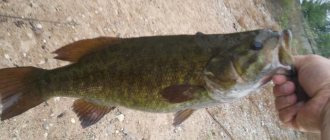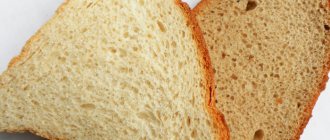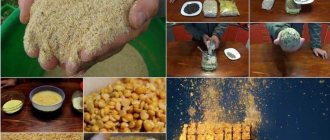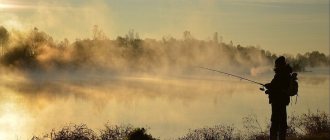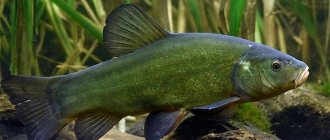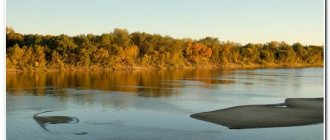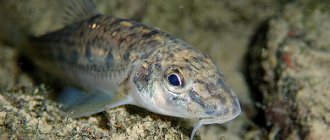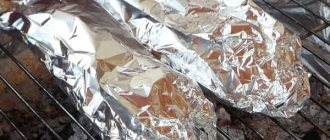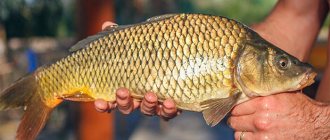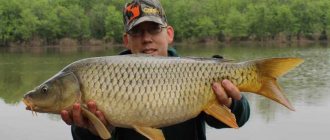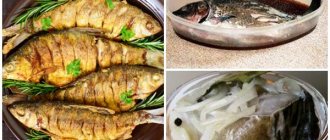Studying carp fishing spots
Fishing doesn't like to be rushed. On any fishing trip, you should have enough patience and time so that upon arrival at a new place, look around, leisurely walk along the shore of the reservoir, listen and watch the water, and maybe even talk with local fishermen. It would not hurt to examine the bottom; for this there are special devices - markers (marker floats), which will allow you to determine not only the structure of the bottom, but also depth changes and much more that will contribute to successful fishing.
Inspect the pond, find carp
The correct choice of place for carp fishing in a pond is the main condition for successful fishing. Many fishermen do not pay due attention to the issue of choosing a place or do not implement the selection process practically.
Perhaps many understand the importance of this issue, but, as a rule, they do not want to spend time on this choice, preferring to use it directly for fishing. But the result is often a lot of time spent contemplating frozen floats and motionless bite alarms...
What place do you usually choose?
Most often, a place is chosen on a reservoir that has convenient access by vehicle, or one where you can comfortably sit on the shore, put up a tent, or set up a camp. Then possibly first-class gear is prepared for action, first-class bait is mixed...
But no amount of gear and bait will give the desired result if the cast is made to where there are simply no carp, and it is impossible to lure it in during a two-day fishing period using feeding.
Fishermen's task
In fact, the task of a fisherman on a pond is quite simple. This is to find the location of the fish and place bait there. Finding a place, the main and primary task, for any planned fishing time, should have enough time and effort.
To fulfill the desire - “I wish I could quickly throw the gear” - means losing the battle by 90 percent at the very beginning, the remaining 10 percent will be considered by Fortune - suddenly the random choice actually turns out to be successful.
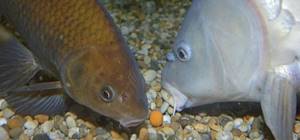
What can you do when choosing a place?
On every fishing trip, there should be enough time and purposeful interest to go around the pond, or at least the nearest part of the shore, look closely and listen, talk with local fishermen, cast a marker, examining the bottom, climb trees and look at the water through polarized glasses, before throwing the gear.
The winner will definitely be the angler who knows the bottom, has noticed a gathering of fish, and who has spent a lot of time not casting and recasting prepared gear, but staying on the reservoir in order to explore it.
“Are there fish in this place?” - this is a question to which you must find an answer with at least a probable accuracy of 50 percent before throwing your gear. That is, upon arriving at a pond you need to look for fish...
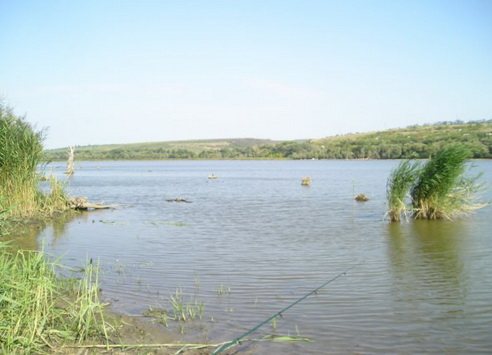
Observing water and carp behavior
Observations of water will immediately bring the first results. If the carp is active, then it is difficult not to notice its play on the surface. Although many will probably say that the game of carp cannot guarantee its bite, and what exactly prompts the fish to splash on the surface of the water is unknown, this issue has not been sufficiently studied.
But we can assume the following. Rare and single splashes in the same place almost certainly indicate that fish are feeding in this place. Throwing gear into such a place will most likely lead to catching fish quite quickly. But if the game goes on throughout the entire reservoir, and somehow chaotically in different places without reference to any visible landmarks (a ravine, for example), then this rather indicates that the fish does not want to be caught today, it is busy with something else. However, these are just observations.
Bottom structure
When choosing a fishing spot, it is most important to determine the structure of the bottom, find underwater currents, areas of hard ground, outcrops of clay, sand or stone, edges, ravines, accumulations of algae, mussels, depth differences, or at least something that distinguishes the area from the general flat “silted " paintings.
Methods for determining bottom structure and depth are well known and can be repeated briefly. This is best done from a boat, tapping the bottom with a long weight suspended on a rope with length marks (knots). Then you can use something as complex as a marker. You can also get by with just a spinning rod with a load, first drag the load along the bottom in a direction, and then try to determine the depth by counting the time by lowering the load to the bottom.
The best fishing in snags
The favorite places for carp to stay are, first of all, snags, especially if it is far from the shore. Clay edges with a sharp difference in depth. Places where underwater springs emerge, often with a rocky or sandy bottom. Sharp changes in depth at the boundaries of aquatic vegetation. Underwater currents, at the confluence of streams, at ravines through which rainwater flows, at spillways, below dams, etc. Such places should be immediately baited and fished with test casts.
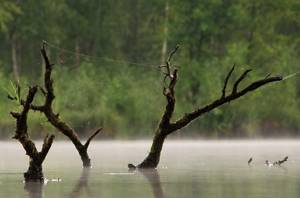
Fishing pressure and the nooks and crannies of the reservoir
There is one more important point. Places that carp respect are often occupied by other anglers. And it happens that such a place is passed on in a relay race from hand to hand, even the queue is filled several days in advance.
In fact, the concentration of lines and hooks in a small area of a reservoir has a very negative impact on the frequency of visits to this area by fish, no matter how attractive it may be to it.
In a reservoir with high fishing pressure, the fish gradually move to quiet places, where there are no disturbing factors and the bite in the “busy” place will gradually decrease.
Therefore, in water bodies highly frequented by fishermen, it is very useful to carefully examine remote, inconspicuous nooks and crannies where there are no fishermen, and there is also no evidence of their presence in the near past. It is there that the “cool place” of this reservoir has most likely moved.
It is recommended to write down your observations on paper or even draw up your own map of the bottom topography and fishing spots of the reservoir, with obligatory reference in meters to some clear landmarks. This will definitely come in handy in the future, since it’s unlikely to be possible to remember whether a carp was splashing under this or another bush.
Where do carp live?
Carp is an unpretentious and very prolific fish, so it lives in abundance in most of the fresh water bodies of Eurasia. Lives in rivers, lakes, reservoirs, where there is a weak or medium current; in such reservoirs the water is warm. Carp also lives in small ponds with stagnant water, since it is not particularly demanding of the oxygen regime, but with the condition that the depth is at least 3 m, especially in the riverbed part. In shallow reservoirs, carp become small, since there is a constant lack of oxygen and a lack of protein food.
Where do carps live?
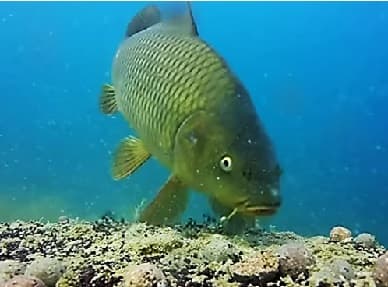
Carp fish live and are found in almost any water. It is bred by fish farms in huge quantities in artificial reservoirs, rented lakes and reservoirs. From time to time, carp escape from fish farms, run wild, and populate adjacent rivers, lakes and other bodies of water.
Rarely found in rivers, they prefer to stay in areas with silted bottoms and weak currents, oxbow lakes and creeks.
In each body of water, fish adhere to its own rules and preferences, despite the wishes of the fishermen.
Experienced carp anglers studied them. But beginners would not mind exploring the feeding areas and “dens” of carp, learning the habits and behavior of the fish at different times of the year.
How fish behave in winter - in hibernation, in spring - in hunting and reproduction, in the summer heat, in August and autumn.
However, only with experience comes catching not only young of the year in the platform, but also trophy heavyweights - old carp, wise in life and with the same experience.
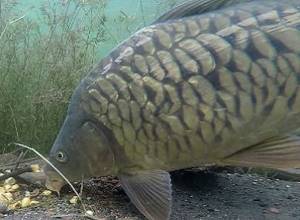
Carp feeding
So, what can be deduced in common from the numerous observations of experienced fishermen and hunters.
- In each individual reservoir, the carp lives as and where it wants. Carp can be found absolutely everywhere - in the grass, in rubble, in snags, on riffles, in a hole or under the shore. But there are some patterns, read on...
- Carp pits and sites are easy to spot from a boat in clear weather and relatively clear water in not very deep lakes and reservoirs.
- Large carp exist and are found in large numbers in many bodies of water, despite the immobilization of the fisherman's float.
Seasonal migrations
In late autumn, when the temperature drops to 2-3 degrees, carp migrate to the deepest holes for the winter.
From May to June, carp usually leave their habitats in and around holes and move to spawn closer to the coastline or on the shallows. At this time, wintering and feeding areas will be dusted with silt.
In June, having spawned, the carp returns to its favorite areas, sweeps out holes and continues its usual way of life.
Where to look for carp in the heat
By the way, where to look for carp in the pond in the heat? Near the surface. Whole schools of fish will hover just below the surface of the water, fanning themselves with their fins. This is due to problems with oxygen in the water.
At this time, the fish will stay in shallow water at a depth of up to 1.5 meters or near the shore in thickets of reeds, reeds, and sedges.
Favorite places for carp in reservoirs
These are, first of all, dams, or rather dumps near them. The colder the water, the deeper the carp will go, sometimes the depth reaches 6 meters, although it is a small fan of deep reservoirs, but there can be impressively sized specimens there in the vicinity of catfish.
A favorite place for carp, dense reed thickets along the banks, bushes with branches hanging over the water. Also river beds and ravines, in these places carp can be found at any time of the year. River carp likes to inhabit the reaches of large or medium-sized rivers, oxbow lakes or backwaters where the current is weak.
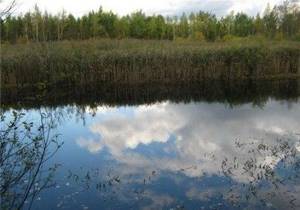
Another favorite place for carp is snags; it is better if it is located far from the shore. The carp bite will be very interesting in such places; it will not be afraid of a heavy sinker and will hardly be able to quickly hide in a snag.
Water temperature and oxygen balance
In addition to the food supply, when choosing a place for fishing, you should take into account the water temperature and oxygen regime. It is important to know that carp are very picky about fishing conditions. In this case, the conversation is not about the purity of the water, but about the degree of oxygen saturation. You need to remember the following:
- In the spring, carp fishing will be more effective in small areas, since here the water warms up faster and, importantly, is rich in food.
- The warmer the water, the lower the oxygen content in it. Therefore, on hot days in summer, you should select areas of the reservoir with great depth and the presence of underwater springs.
- Places with a depth of more than 5 meters are not considered promising, since at such a depth there is practically no food supply and the carp located in such deep holes will rest and go to other areas to feed.
- Starting from the end of September, underwater vegetation gradually begins to die off, in addition, leaves begin to fall into the water, all this, as a result of decay, worsens the oxygen balance. Therefore, areas for fishing should be selected at a distance of more than 5-8 meters from the shore with the absence of growing underwater vegetation.
- Carp is a heat-loving fish, this should not be forgotten, so it is important to select areas in the water area where not only the water is rich in oxygen, but also there are no sudden changes in temperature.
- In summer, in hot weather, carp prefers well-ventilated areas of the water area, since waves help enrich the water with oxygen.
Read: Carp fishing in July
If you take into account all the listed factors, then choosing a place for fishing will be much easier and a good catch will be ensured.
Carp fishing on the lake (video)
Carp can be detected by the way the thickets of reeds or other growths in the coastal zone move and a splash is heard. This is how the fish feeds, while creating characteristic sounds, or as they say “smacking”. The location of the carp can also be determined by the rising bubbles that appear when the carp begins to dig through the mud. We recommend reading the article about making boilies with your own hands.
But other fish, such as bream, can behave in the same way; we recommend reading the article on carp habits for more complete information about it..
Good luck with your carp hunting, it is truly exciting!
